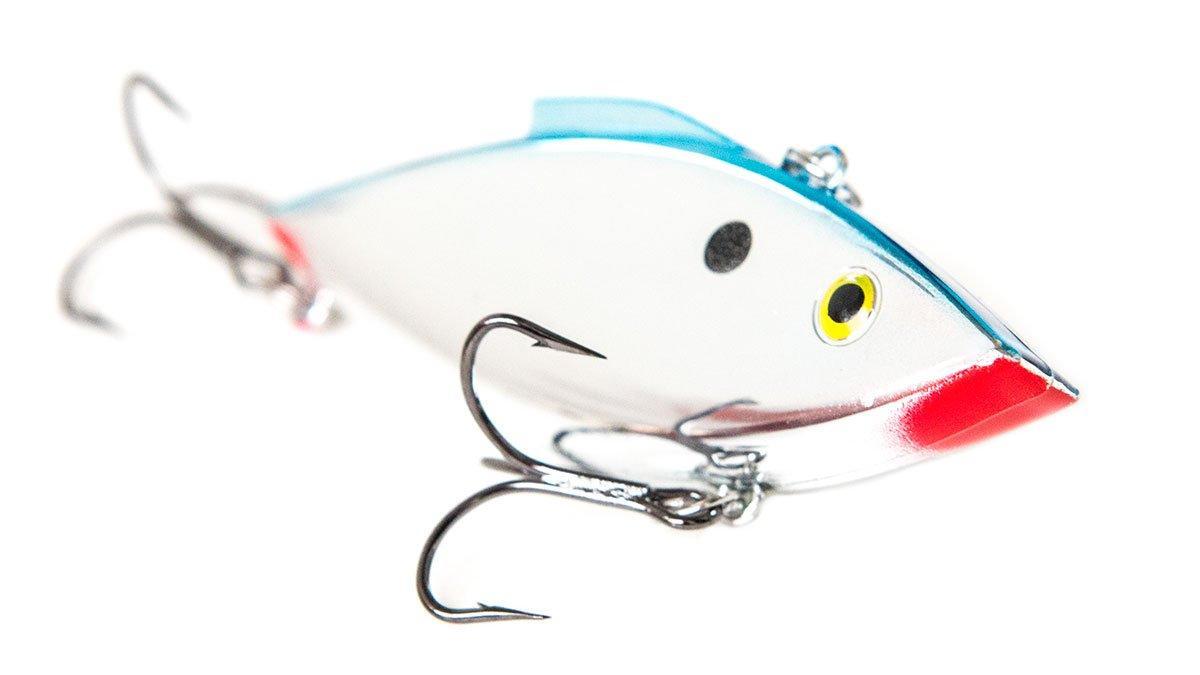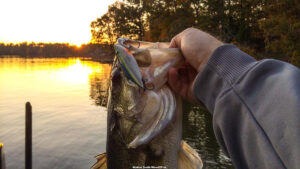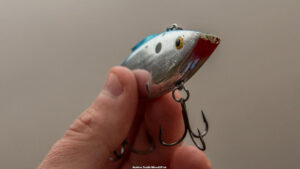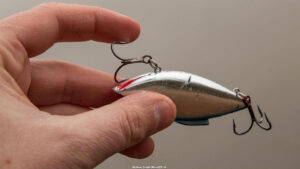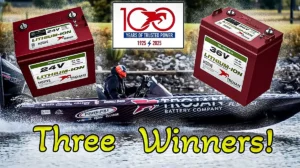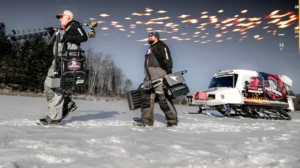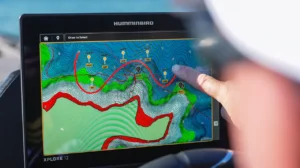We all have a few lures to which we turn in a pinch. When things get tough and it seems as if the bass have jumped the nearest dam, we’ll often rely on these time-tested lures to provide a beacon of hope. We know how they feel on the end of our lines, we can predict how they’ll react when collided into cover and most importantly, we’ve caught plenty of fish on ’em in the past.
The confidence these lures provide, whether we realize it or not, makes a big impact on our fishing success.
One of my personal favorites is the Bill Lewis Rat-L-Trap. I can’t even begin to fathom how many bass I’ve caught with it throughout my lifetime. In an era in which some of the latest and greatest lures look more like spaceships than bass forage, this relatively ordinary-looking lure continues to produce giant bass for both myself and thousands of anglers worldwide.
There are 3 characteristics that make this lure a staple in my boat.
- Castable
- Easy to use
- Durable
Casts a country mile
Whether you’re an expert angler or a beginner, it’s easy to appreciate the convenience and effectiveness of a good-casting lure. Bass are very tuned into to their environment, so it’s always important to make long casts both from the bank and a boat. There’s nothing worse than getting too close and watching a big bass wake in the other direction.
The Bill Lewis Rat-L-Trap makes long casts seem like second nature. You can cast ’em into the wind, with the wind or in no wind at all—it honestly doesn’t matter. It doesn’t helicopter in the air, allowing for accurate, streamlined casts in all conditions.
When I’m teaching new anglers to use casting gear on guide trips, I almost always rig them up with a “Trap”. The internal rattles transfer weight to the back of the lure on the back cast, loading your rod and facilitating ridiculously long casts. Even with the 1/4-ounce model, I rarely find myself or my clients picking out backlashes when using this lure.
The castability of the Rat-L-Trap is one of the primary reasons it’s a renowned favorite for covering vast expanses of water in a short period of time. I’ve used it to catch fish on huge grass flats, creek channel flats, tapering points and the backs of pockets. I often categorize it as a “search bait” because I’m able to eliminate dead water efficiently and quickly find the most active and aggressive bass in a given area.
It’s easy to use
Some lures require a lot more angling expertise than others. While I’m always mindful of my cadence, retrieve speed and rod angles when fishing moving baits, fishing the Rat-L-Trap isn’t rocket science. If I can catch fish with it, I’m certain you can as well.
Below are some of the most effective retrieves for this particular lure.
- Straight reel: There’s nothing fancy about it, but it can be incredibly effective throughout the entire year. Make a long cast, engage your reel when the lure hits the water and start reeling at a moderate speed. This can be especially effective when targeting schooling fish in open water and around scattered cover. Bites are easy to detect, too. You’ll know when one sucks it down. I promise.
- Burn it: I’ve caught a lot of fish reeling the Rat-L-Trap as fast as I possibly can. It’s a great technique when a group of schoolers come up to the surface, but it’s also productive in low-light hours. I’ll target the edges of grass lines, grassy flats or banks leading into and out of major spawning areas. You’ll often have a lot of fish “swat” at it during the retrieve, but maintaining your retrieve will give them another opportunity to get hooked.
- Stroke it: Although most anglers primarily use this lure in shallow water, it’s also a solid choice for targeting deeper concentrations of bass. I got on a killer bite last summer casting it to offshore humps in 20 feet of water and I’m telling you—that’s a crazy fun way to catch ’em. You’ll simply make a long cast and let the Trap sink on a slack line. When it reaches the bottom, make long, upward strokes with your rod, going from the 9 o’clock position to roughly the 12 o’clock position—almost like fishing a big spoon. Most of your bites will occur on the fall, so it’s important to watch your line for any ticks or jumps.
- Snap it: This is a really popular technique for fishing big, grassy flats. It takes some time to get the hang of it, but it’ll be tough to do anything else once you figure it out. Basically, you’ll reel it just fast enough to where you can barely feel it “ticking” the top of the grass. Every now and then, you’ll run into a thicker patch of vegetation which will cause you to quickly snap your rod tip upward to free the hooks of any obstructions. This sudden change in cadence will cause some bone-jarring strikes, so be prepared to hang on. I’ll also use this technique when I’m trying to locate a certain species of vegetation. I’ll let it go a little deeper into the grass so I can actually bring some of the vegetation back to the boat. If I see some crisp, green hydrilla or something similar, I know big bass are likely nearby.
Four lanes of traffic and a logging truck
A lot of your Rat-L-Trap fishing is going to revolve around “ticking” the bottom. Whether it’s rocks, stumps or grass, you’ll probably beat the heck out of this lure. But that’s not a bad thing—it’ll hold up to just about anything you throw at it.
My Traps have a bunch of hook rash and teeth marks on them—that just means they catch fish—but I honestly can’t remember the last time I’ve broken one. They remain free of cracks, splits and chips for many years. I’m sure I have some that are over 10 years old.
I have to tell this funny story. Hang in there, it’s a good one.
I was fishing a tournament years ago and the bite was tough. Weigh-in was at 3:00, so I pulled up to the nearby riprap around 2:30 so my co-angler could catch a couple fish to fill out his limit. I figured it was the gentlemanly thing to do. We couldn’t get the darn bass to eat anything but a chrome Rat-L-Trap, so this other fellow was using one of mine. As we’re fishing the corner of this bridge, this joker casts his 1/2-ounce Trap to the other—yes, the other—side of the bridge. Don’t ask me how. I could see the thing dangling like a Christmas ornament through the break in the riprap.
A giant logging truck was coming down highway 441, so he gets to reeling his Trap as fast as he can—I guess he thought he was going to get dragged down the road or something. To make a long story short, he safely reeled the lure all the way across four lanes of traffic—it was a thing of beauty, really—and it plopped back into the water and he caught a stinkin’ 14-inch bass. No joke. I’m not smart enough to make this stuff up.
How’s that for durability?
If you haven’t tried a Rat-L-Trap, I suggest doing so. When I get in a panic, I start winging it around because I have so much confidence in it. It’s effective, durable and you’ll be able to cast it well regardless of your skill level.
The Bill Lewis Rat-L-Trap is available at these online retailers:


